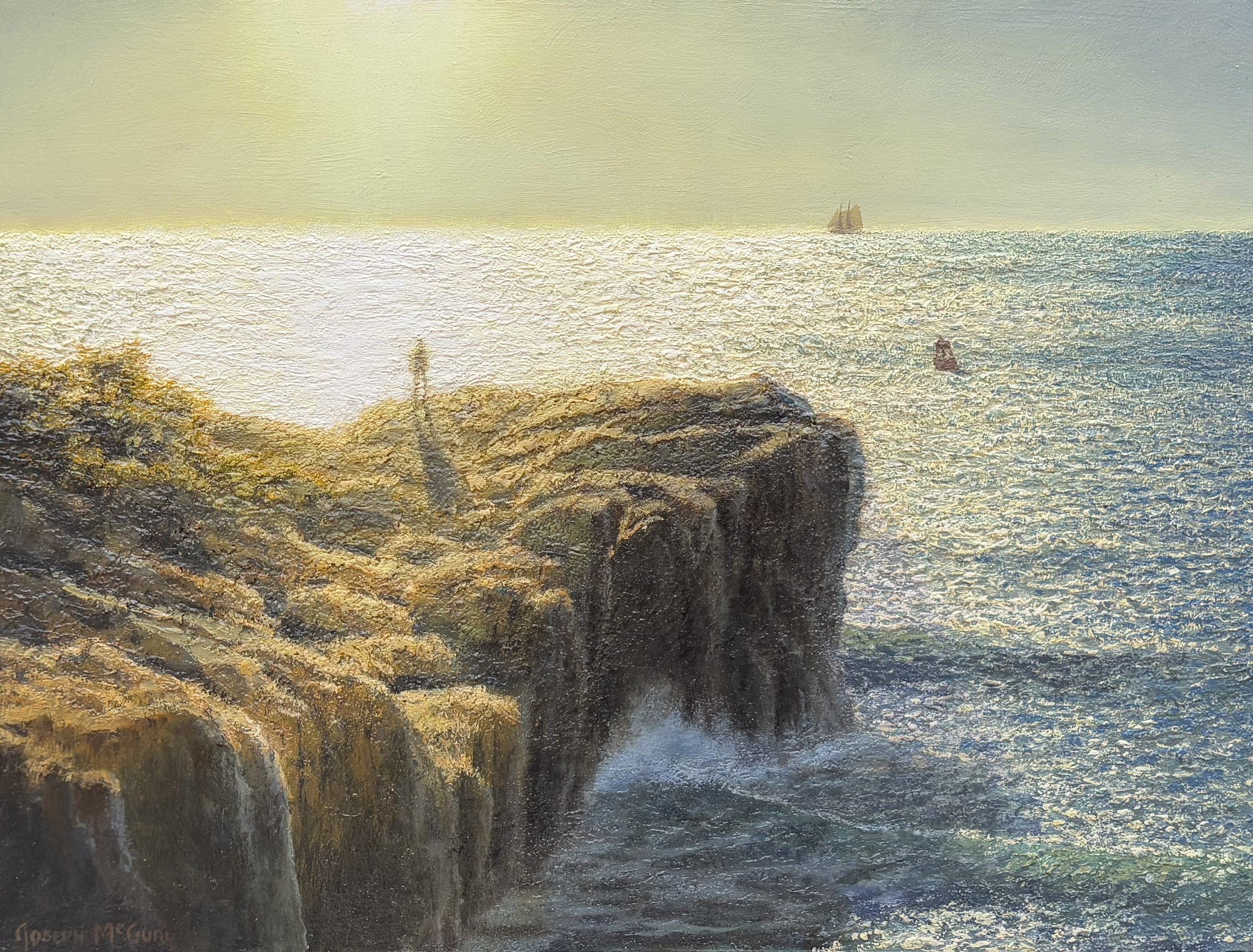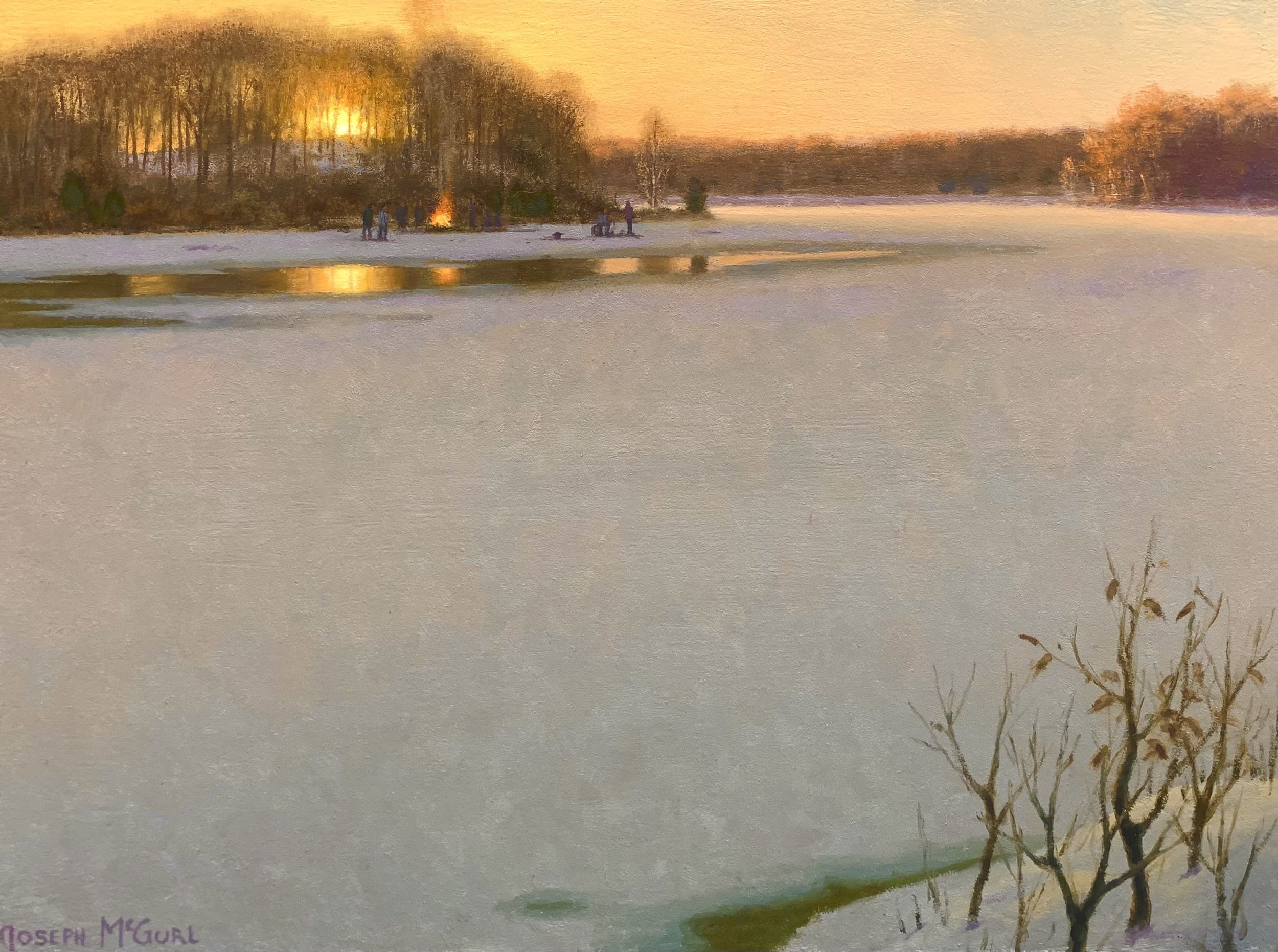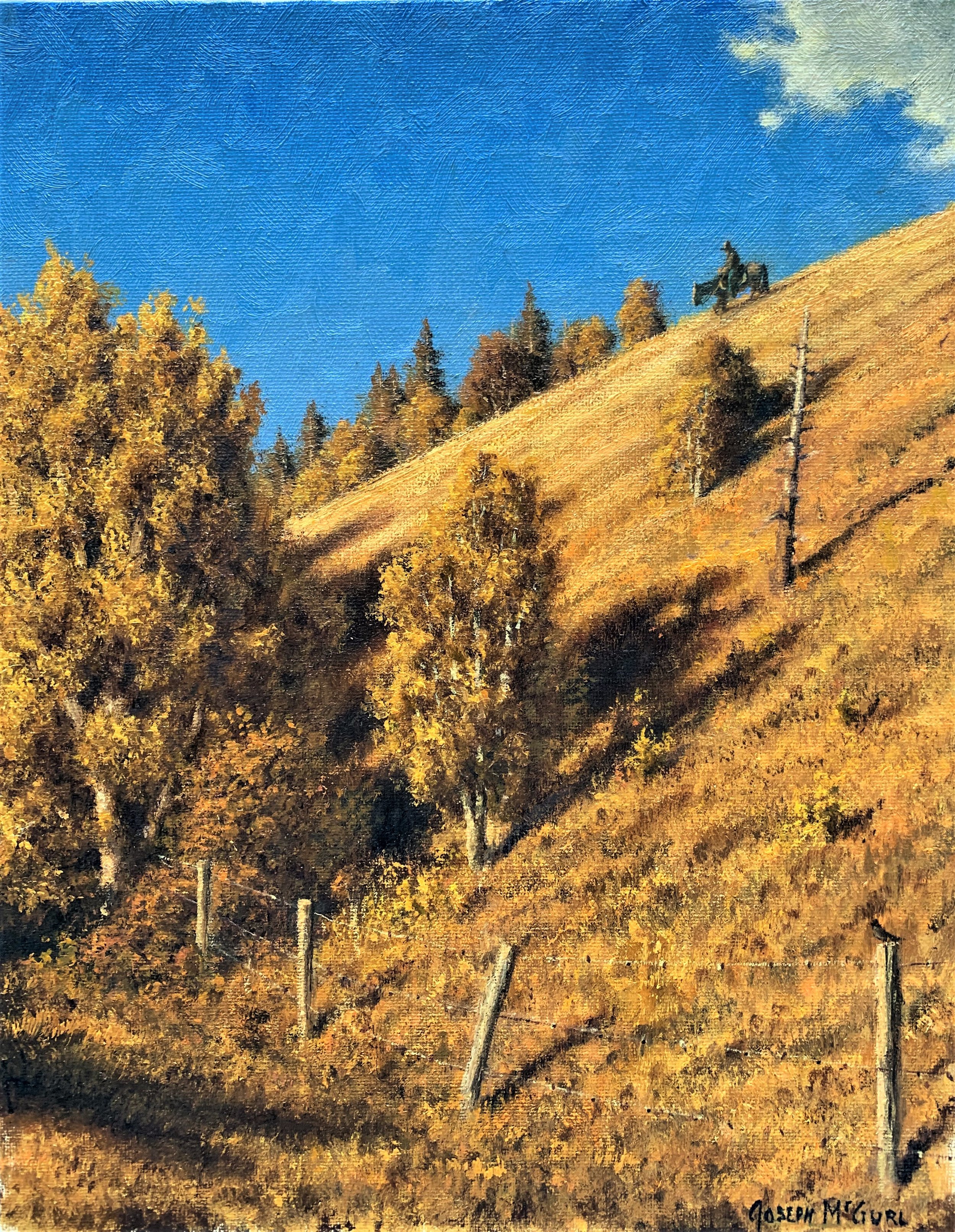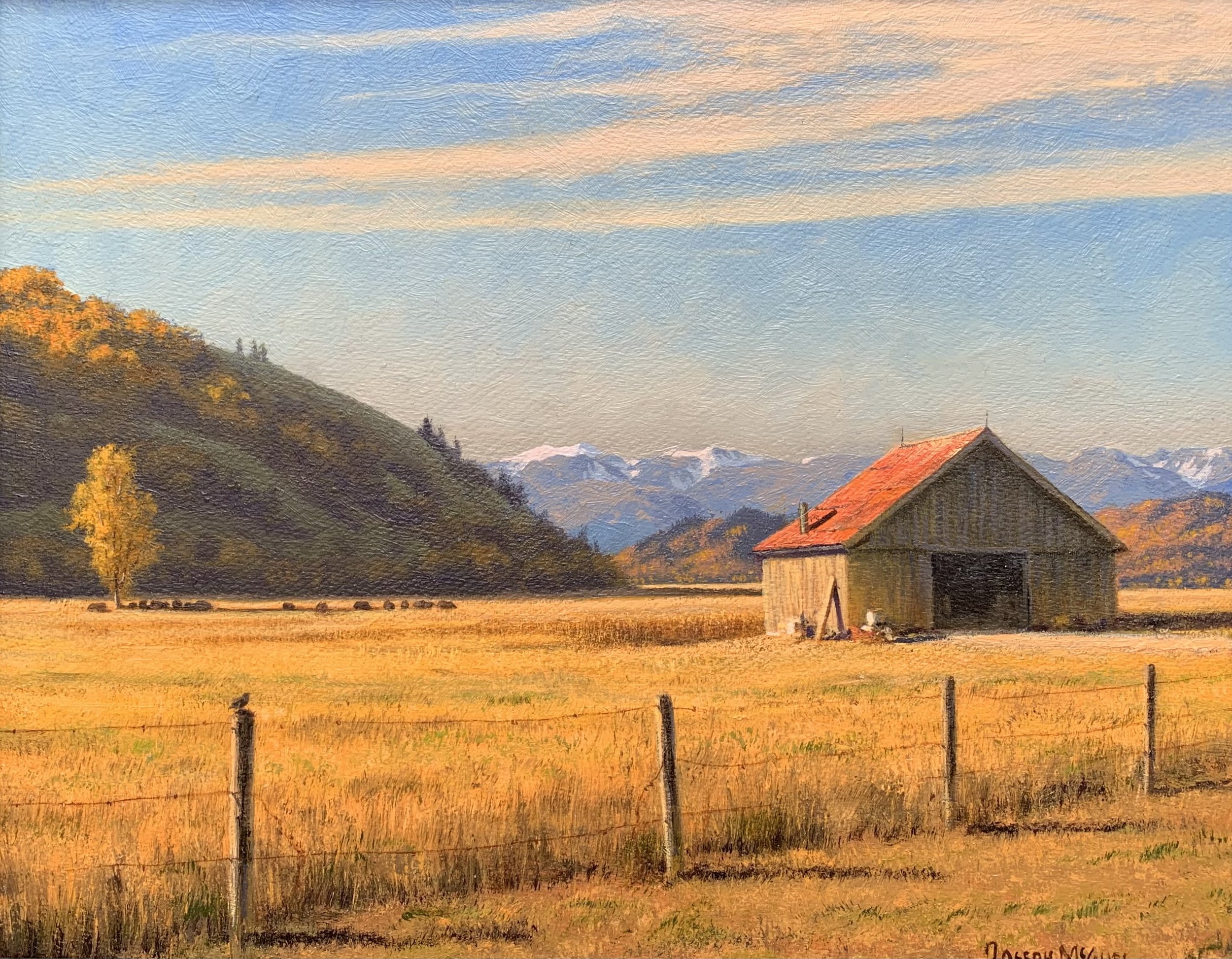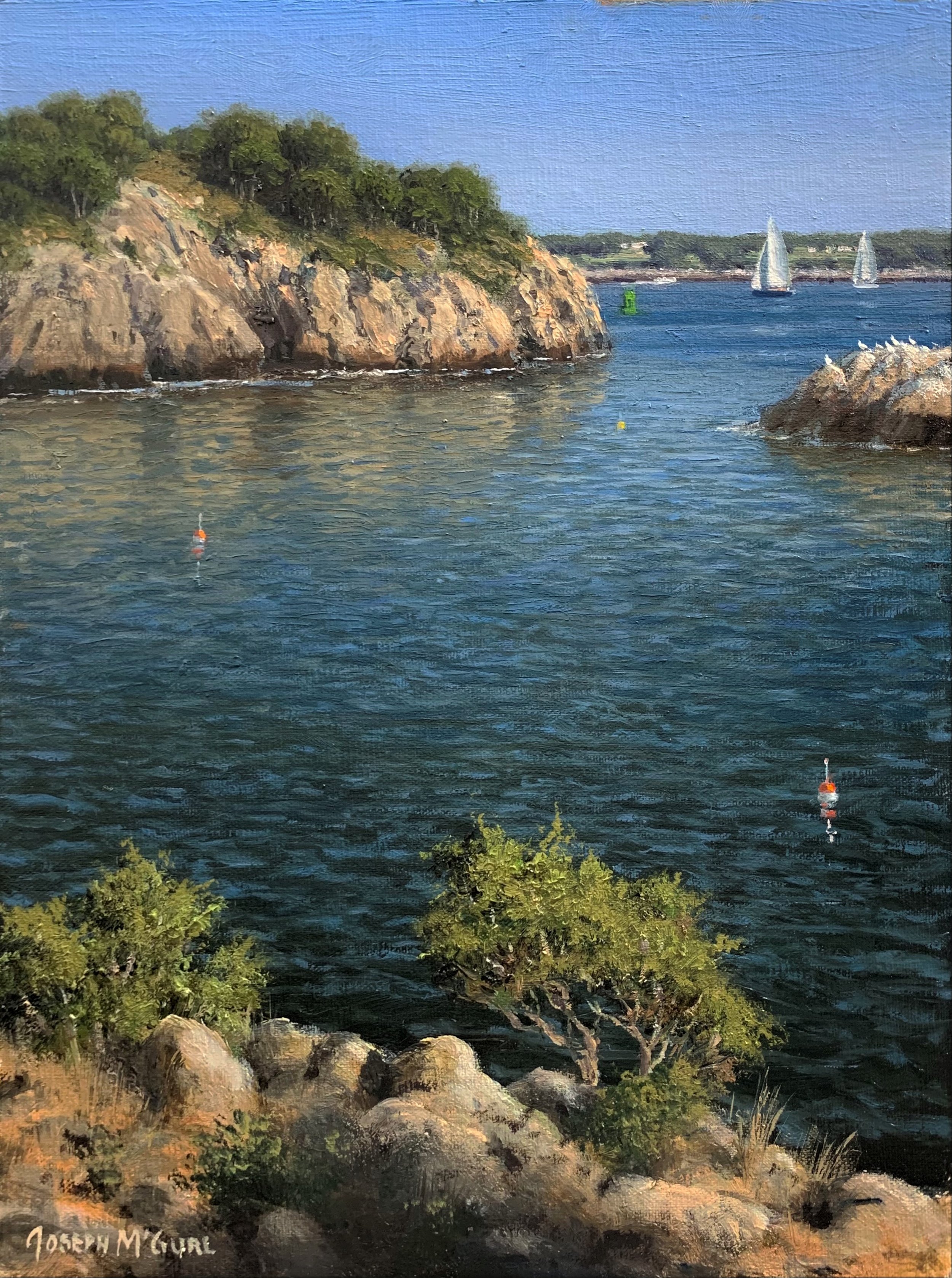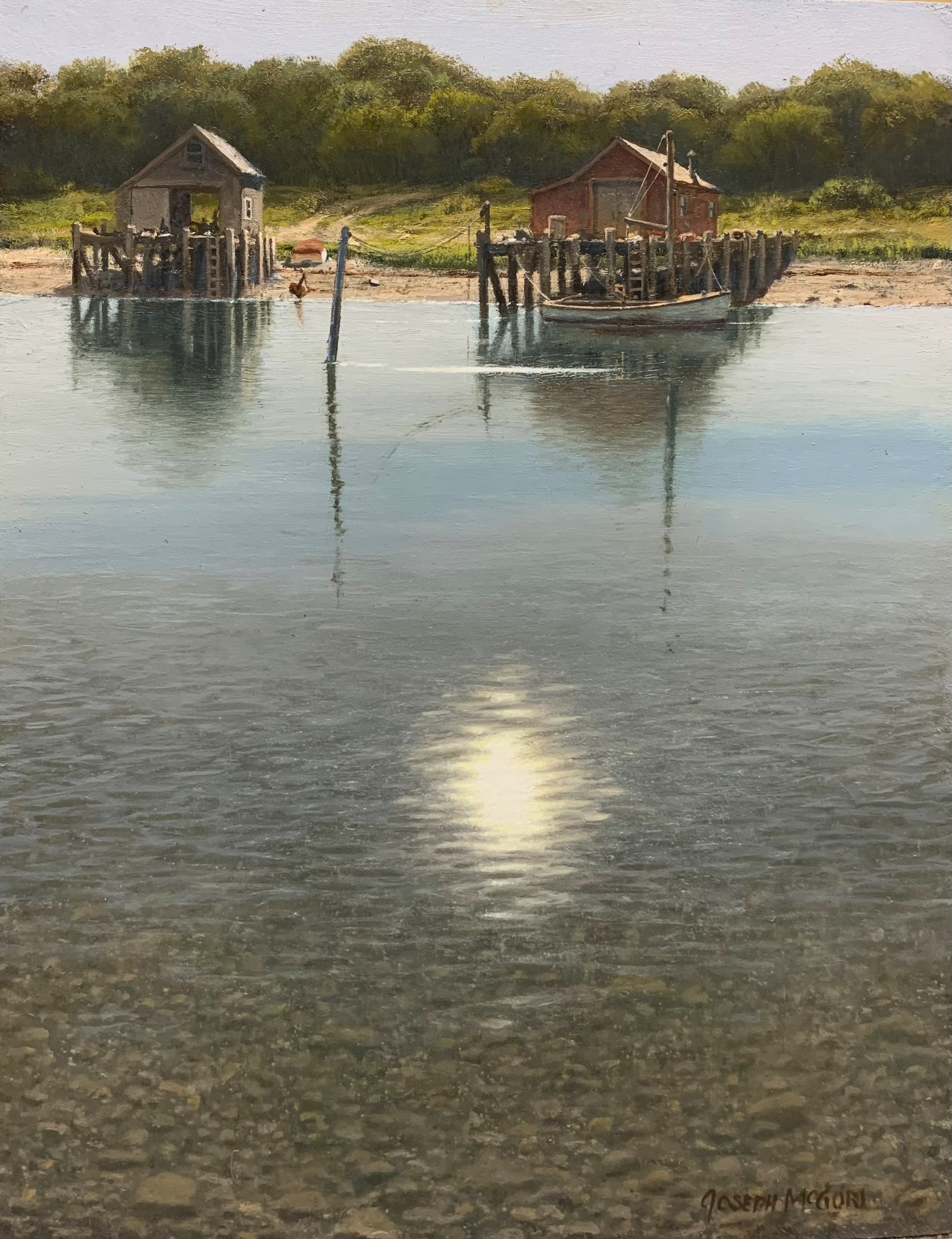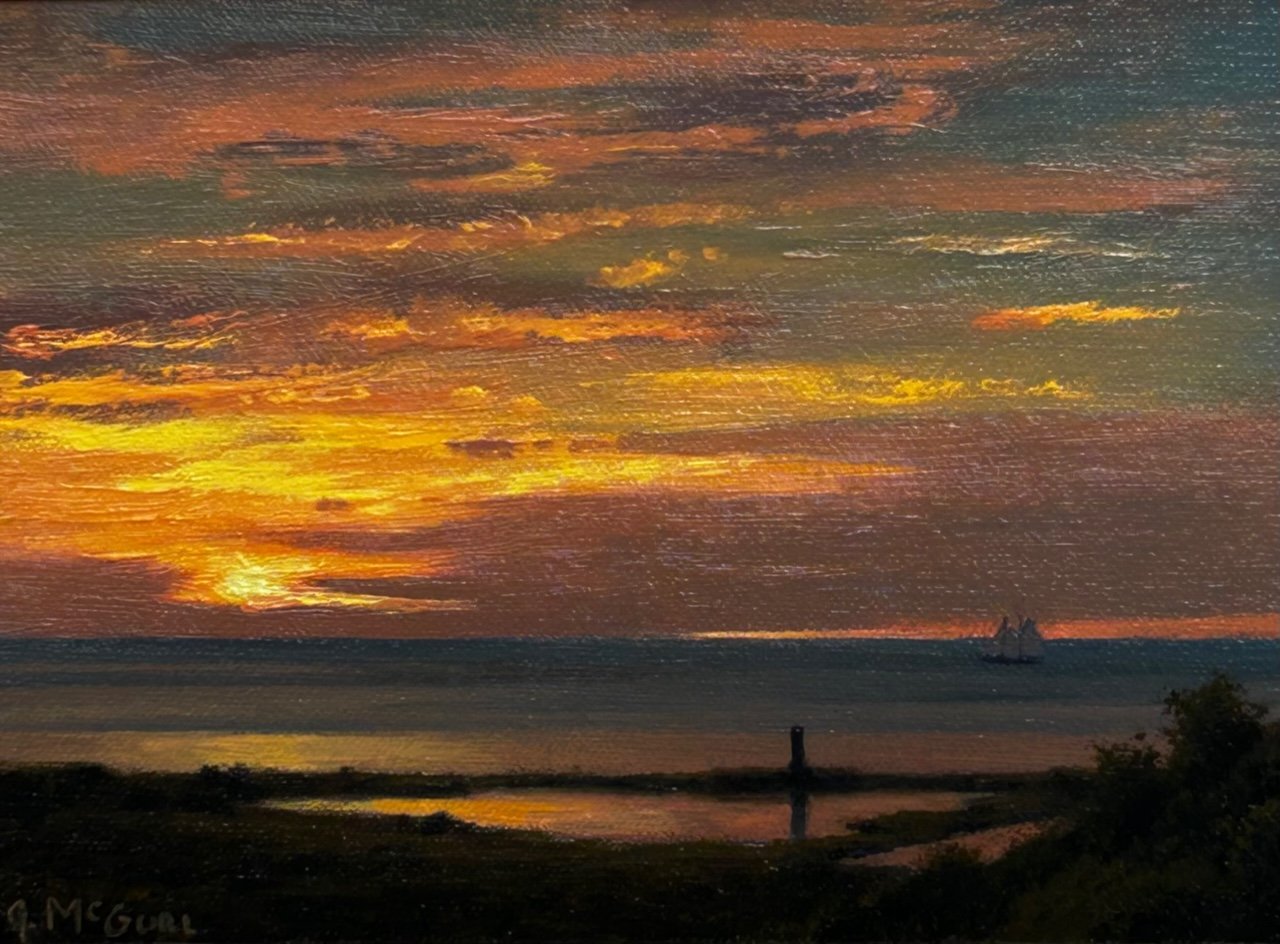Joseph McGurl was born in Massachusetts in 1958. He grew up working with his father, James McGurl, who was a muralist and his most influential teacher. Through his father, he was exposed to a wide variety of materials and learned an appreciation of the craft of painting. Another early influence was Ralph Rosenthal, a teacher at the Boston Museum of Fine Arts. He subsequently graduated from Massachusetts College of Art with a dual major in painting and education. He also studied in England and Italy. After college, he worked for a period of time as a yacht captain, sailing throughout the east coast from Maine to the Caribbean. After a few years he realized that in order to improve, he must devote himself solely to painting. In search of a more solid training in drawing, he sought out Robert Cormier, a devotee of the French Academy methods and studied figure drawing under him.
McGurl's paintings have been included in several museum exhibitions in Massachusetts, New York, California, and Rhode Island. He had a retrospective solo show at the Cape Museum of Fine Arts, The Cahoon Museum of American Art, and the Saint Botolph Club of Boston. He was a participant in the Sea to Shining Sea Exhibition, which traveled to twelve museums over a four-year period. Representing Representation, a survey of the most significant realist work being done today included his work in the 2001 show, at the Arnot Art Museum, and he was one of the few artists invited to exhibit simultaneously at the concurrent Representing Representation West, which showcased western art at the Rockwell Museum of Western Art. McGurl is an elected member of the Guild of Boston Artists and is a Copley Master with the Copley Society of Boston, along with being represented by galleries in New York, San Francisco, Cape Cod, and Nantucket. He has won top awards from both organizations including the John Singleton Copley Award for Artistic Achievement. He has also been the subject of numerous book and magazine articles.
Joseph's paintings are often seen in relationship to the great 19th century luminist painters but with a thoroughly modern approach to style and subject. For him, the process rather than the product is the most important part of a painting. For this reason, his large studio paintings are developed from sketches painted on location. By not relying on photography this method gives him the freedom to create paintings based on his imagination, memory, and sketches. Although the objects depicted in the paintings are elements of the landscape and have a deep personal meaning to him, an equally important subject is an exploration of light, form, space, and color interpreted through paint. During the summer months he cruises the coast of New England with his wife and children aboard their boat, "Atelier," which he uses as a floating studio. The artist, his wife Patricia, and sons Max and Sean live on Cape Cod.


